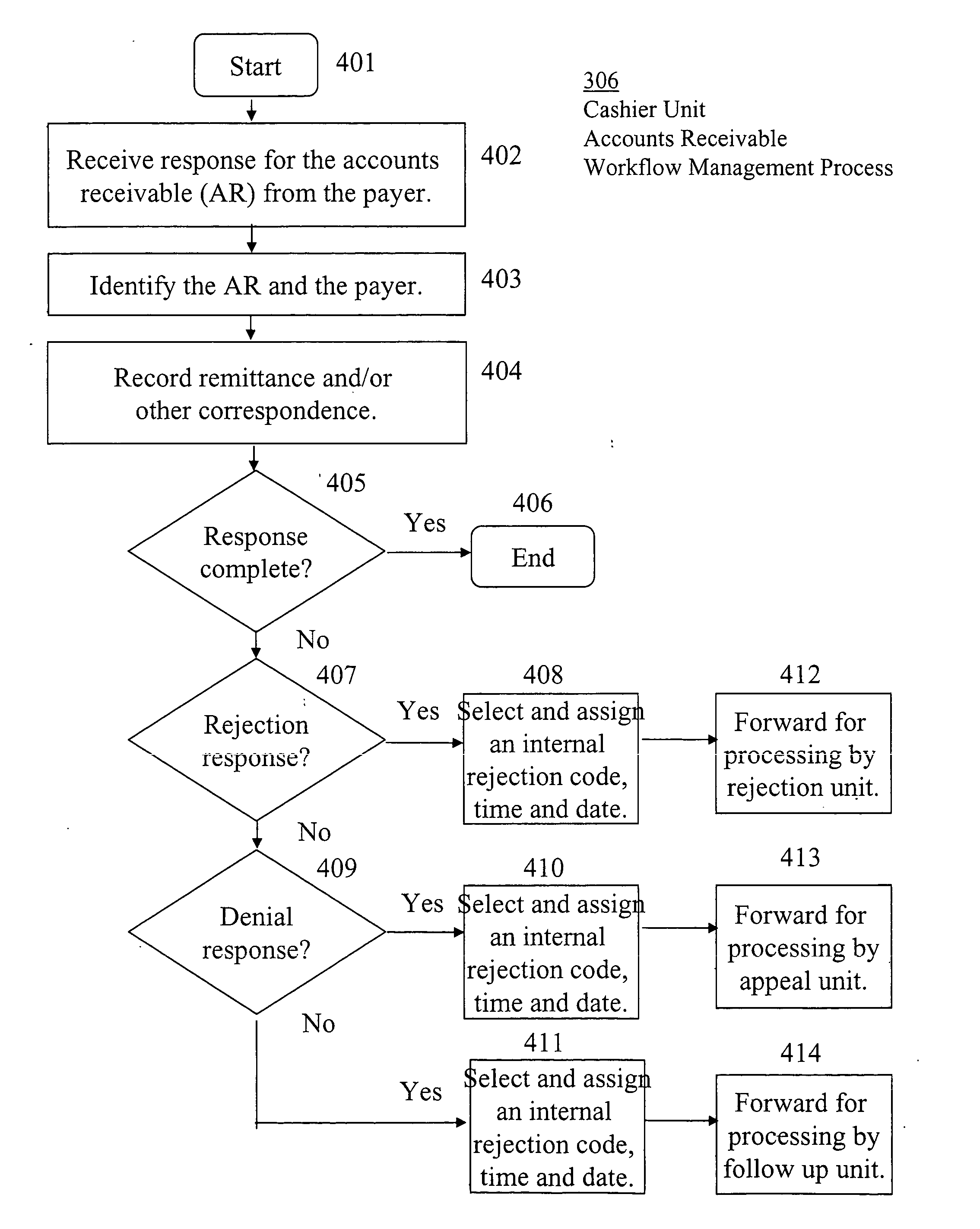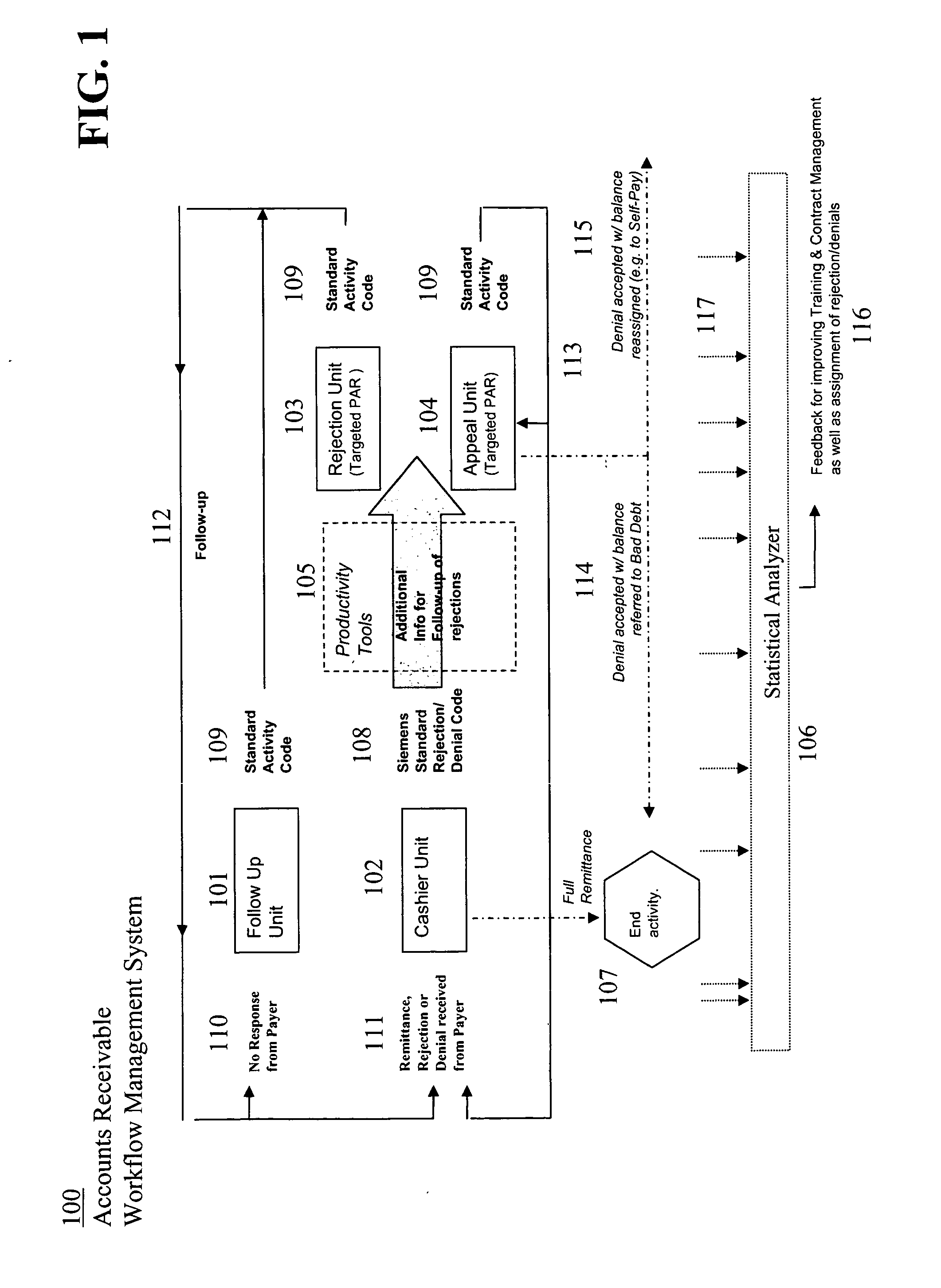System for processing unpaid healthcare claims
a healthcare enterprise and unpaid technology, applied in the field of management of healthcare enterprise unpaid receivable accounts, can solve the problems of increasing the cost of health care, increasing the cost of supporting these administrative systems, and increasing the complexity of the industry
- Summary
- Abstract
- Description
- Claims
- Application Information
AI Technical Summary
Problems solved by technology
Method used
Image
Examples
Embodiment Construction
[0022]FIG. 1 illustrates an accounts receivable workflow management system 100, in accordance with a preferred embodiment of the present invention. The system 100 generally has four units including: a follow up unit 101, a cashier unit 102, a rejection unit 103, and an appeal unit 104. The workflow for the accounts receivable flows among these four units 101-104. Other elements of the system 100 include productivity tools 105, a statistical analyzer 106, and an end activity function 107. One or more elements or functions of the system 100 may be fully automated, partially automated and manual, or fully manual, depending on various business and technical considerations.
[0023] The system 100 is intended for use by a healthcare provider that is responsible for monitoring the health and / or welfare of people in its care. Examples of healthcare providers include, without limitation, a hospital, a nursing home, an assisted living care arrangement, a home health care arrangement, a hospice...
PUM
 Login to View More
Login to View More Abstract
Description
Claims
Application Information
 Login to View More
Login to View More - R&D
- Intellectual Property
- Life Sciences
- Materials
- Tech Scout
- Unparalleled Data Quality
- Higher Quality Content
- 60% Fewer Hallucinations
Browse by: Latest US Patents, China's latest patents, Technical Efficacy Thesaurus, Application Domain, Technology Topic, Popular Technical Reports.
© 2025 PatSnap. All rights reserved.Legal|Privacy policy|Modern Slavery Act Transparency Statement|Sitemap|About US| Contact US: help@patsnap.com



